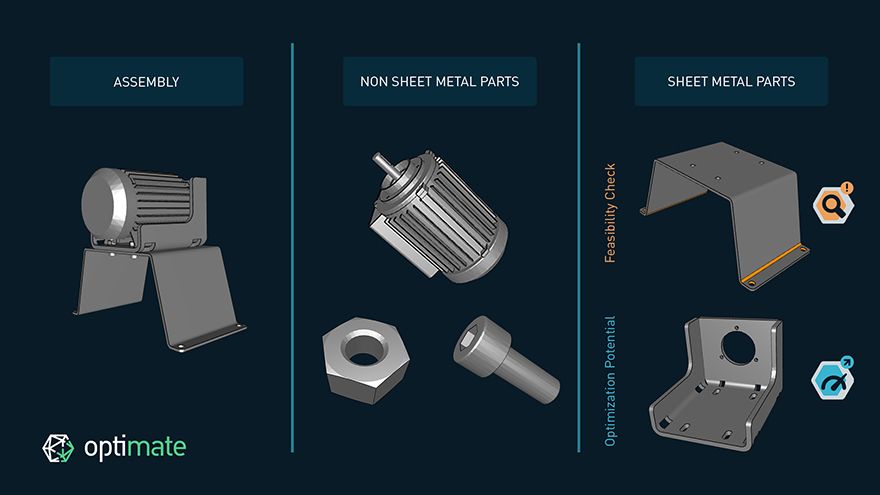 Test customers wanted: Optimate is looking for more test users from the sheet metal processing industry for its new SolidWorks CAD plug-in
Test customers wanted: Optimate is looking for more test users from the sheet metal processing industry for its new SolidWorks CAD plug-inStuttgart-based
Optimate, a
Trumpf spin-off, has announced two extensive upgrades to its cloud-based software solution for analysing and optimising sheet metal parts. In response to increasing user demand, assemblies with up to 25 individual parts can now also be analysed. Moreover, a new CAD plug-in for SolidWorks makes design optimisation even more user-friendly.
Optimate’s digital service includes two main functions: ‘Feasibility Analysis’ and ‘Part Optimisation’. Both have been given a user-friendly upgrade with the introduction of new features. Sheet metal processing companies in particular will be pleased with the option to check assemblies for feasibility. CEO Jonas Steiling said: “In our app, end users can identify defective parts in advance and adapt them as required before they reach the bending machine. We have now extended this analysis to include assemblies.”
In addition to the analysis of single parts, assemblies with up to 25 individual parts can now also be checked for feasibility and optimisation potential. To this end, the assembly uploaded to the app is being dissolved into its individual parts and examined under a digital microscope.
Sales director Sebastian Beger said: “For single sheet metal parts, our service already works entirely automatically. For the comprehensive analysis and optimisation of assemblies, it is currently still a hybrid process; following the initial analysis with our tool, we take another look at the assemblies ourselves and offer personal consulting. In the future, we will fully automate the entire process.” The AI-based solution’s database will help ensure that the new assembly analysis function will also be available in a fully automated form in the long term.
More cost-effectivelyMr Steiling explained: “In our app, the user is given tips as to whether and how the individual parts of an assembly can be manufactured reliably and possibly more cost-effectively.”
However, in the case of assemblies, consultation with the design department has been required in most cases so far. The new function does things differently — if, for example, the minimum flange length of a sheet metal part is not met, it also impacts the underlying assembly — and this is precisely what the app detects. The analysed individual parts can then be adjusted with just one click and the corrected CAD data conveniently downloaded.
Optimate holds decades of sheet metal design knowledge for sheet metal processing in digital form at the ready. In future, this valuable know-how will also be stored for entire assemblies. The new feature for dissolving assemblies can already be used.
Optimate recently began offering a beta version of its new SolidWorks CAD plug-in to be trialled by customers — designers benefit from an improved workflow because they can test and optimise their parts for feasibility directly in the system without having to export the CAD data and upload it to the app. Since the user best understands the application case, they can now view the design proposals directly in the CAD system and check them for suitability. The final decision to adapt or optimise a part is up to the designer.
Mr Steiling continued: “We are currently looking for more test customers for our SolidWorks CAD plug-in. There are also plans to continuously advance the CAD plug-in and integrate it into CAD programs from other providers.”
Also new is the full customisation of all analysis-relevant settings for the part analysis. Machine data can be customised and viewed on the user profile in the app. For example, the maximum bend length, maximum bend pressure, existing tool pairings or individual minimum flange lengths are stored and used for the feasibility analysis.